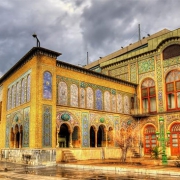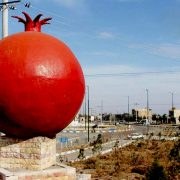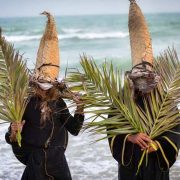Hormozgan Province (Things to Do, Weather, Beach, Map)
Situated on the southern coast of Iran, Hormozgan Province is a fascinating area where the rugged Zagros Mountains meet the Persian Gulf. This province is renowned for its vibrant port cities, stunning islands like Kish and Qeshm, and its rich cultural traditions. Visitors can explore ancient forts, and pristine beaches, and dive into the colorful marine life of the Gulf’s coral reefs.
With a wealth of natural wonders, historical sites, and unique local traditions, Hormozgan offers an array of unforgettable experiences. Ready to uncover the secrets of this coastal gem? Let’s dive deeper into what makes Hormozgan a must-visit destination.
Hormozgan Province Cities
Hormozgan province located in the south of Iran embraces many great cities and islands of the Persian Gulf that would make great dreams for tourists. Bandar Abbas as its provincial capital is a port city with lots of attractions such as Fishmarket, Hindu temple, and Genoo Mountains.
Hormozgan province embraces scenic islands among which Kish, Hormoz, Hengam, and Qeshm are the most beautiful ones.
Kish is one of the small islands in the Persian Gulf; however, it is one of the most picturesque coral islands in the world. Its gorgeous beaches are good places to swim in the blue-gem waters of the gulf. It has many historical sites as well.
Hormoz Island is a piece of paradise in the Persian Gulf; it attracts many tourists because of its colorful mountains, silver sand shores, and great local people.
Qeshm is the largest island located in the Strait of Hormoz and it has many wonderful cultural and natural attractions such as Chahkooh Canyon, and Star Valley. There are lots of things to maze tourists and make a perfect trip for them.
Hengam Island has scenery on rocky shores, serene sunset, kind natives, delicious samosa, and colorful fish; one can enjoy a relaxing trip by spending time on this tranquil island.
Hormozgan Weather
Hormozgan Beach
Hormozgan Beach is a true haven for those who love sun, sand, and sea. Stretching along the Persian Gulf, Hormozgan Beach offers pristine shores and crystal-clear waters, perfect for swimming, sunbathing, and water sports.
Whether you’re looking to relax under the sun or explore the marine life through snorkeling and diving, Hormozgan Beach provides a diverse range of activities. The stunning sunsets and tranquil ambiance make Hormozgan Beach a must-visit spot for anyone traveling to this coastal region.
Hormozgan Island Things to Do
Exploring Hormozgan’s islands offers a treasure trove of experiences for visitors. On Kish Island, you can indulge in luxury shopping, visit the ancient Greek Shipwreck, or enjoy the vibrant nightlife.
Qeshm Island, the largest in the Persian Gulf, is famous for its stunning natural attractions, including the Hara Mangrove Forests, the surreal Valley of Stars, and the Chahkooh Canyon.
For a quieter escape, visit Hormuz Island, known for its colorful Rainbow Valley and the historic Portuguese Castle. Each island offers a unique blend of adventure, culture, and natural beauty, making them must-see destinations in Hormozgan.
Hormozgan Traditions & Customs
Hormozgan Traditional Handicrafts
Hormozgan is renowned for its rich tradition of handicrafts, which reflects the region’s cultural diversity and deep-rooted heritage. Local artisans, often using techniques passed down through generations, create intricate pieces like colorful embroidery on fabrics, delicate palm leaf weaving, and beautiful pottery.
The vibrant designs of Hormozgan’s traditional clothing, crafted by skilled hands, often feature bright colors and detailed patterns that tell stories of the region’s history. These handicrafts are more than just souvenirs; they are a testament to the artistry and craftsmanship of the local people, who continue to preserve their cultural legacy through their meticulous work.
Hormozgan Province Souvenirs
When visiting Hormozgan Province, tourists will find a variety of unique souvenirs that capture the essence of the region’s culture and craftsmanship. Traditional clothing, with its vibrant colors and intricate embroidery, makes for a beautiful and wearable keepsake. Handwoven baskets and mats made from palm leaves are not only practical but also showcase the local artisans’ skills.
Perfumes and oils made from local herbs and flowers, particularly rosewater, are popular choices for their exotic and long-lasting fragrances. Additionally, colorful seashell jewelry and decorative items crafted from the Gulf’s natural treasures are perfect mementos of the province’s coastal charm. Each of these souvenirs carries a piece of Hormozgan’s heritage, making them cherished reminders of a visit to this captivating region.
Last Words
Are you planning to travel to Iran? Check out our Qeshm island tour.

















